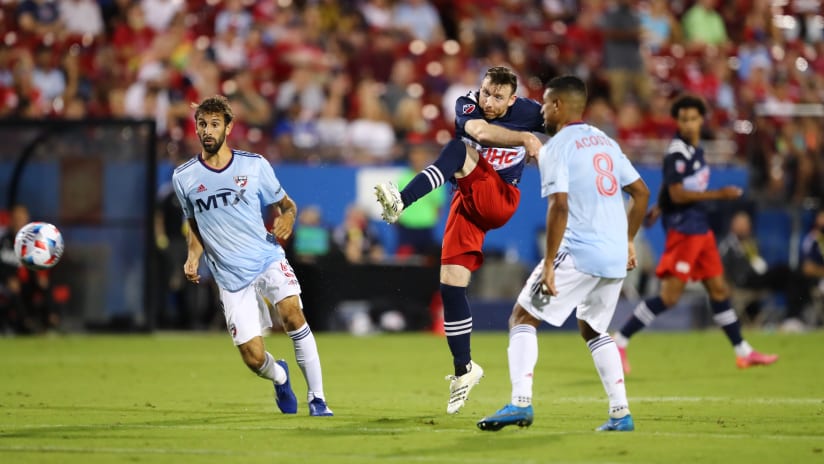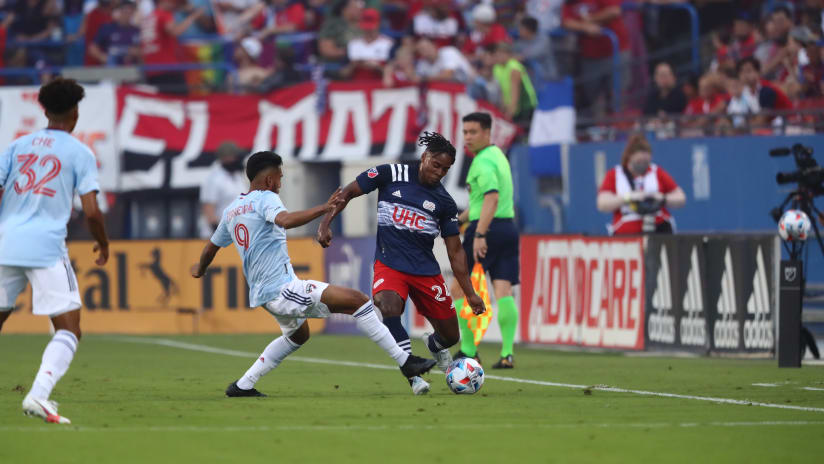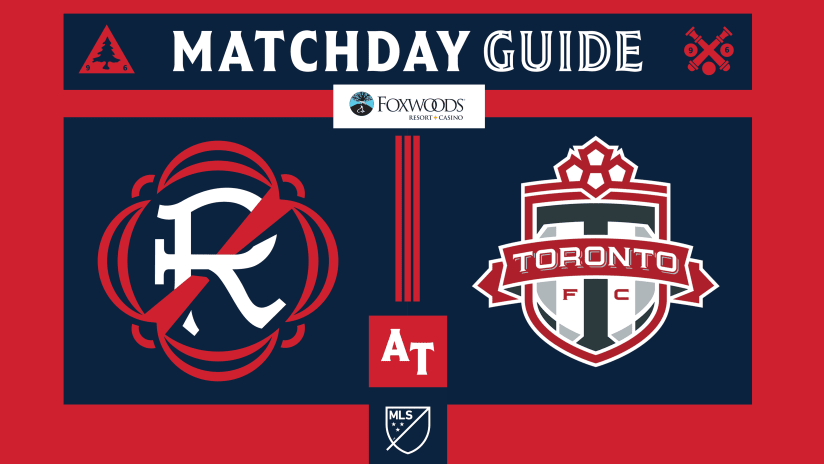FOXBOROUGH, Mass. – It was clear that the New England Revolution needed a change.
Another summer swoon had come to a head in early August, when the Revs lost four straight games to drop from sixth to eighth place in the Eastern Conference. They’d been outscored 13-2 in that four-game stretch to see their goal differential balloon from -6 to -17.
So for the Revolution’s trip to face the San Jose Earthquakes on August 24, head coach Jay Heaps moved away from the 4-2-3-1/4-3-3 hybrid formation he’d employed for years, instead switching to a more standard 4-4-2 setup with a diamond in midfield.
The results were immediate.
New England shut out San Jose at Avaya Stadium to register just their sixth clean sheet of the season, and the change kick-started a late-season run in which the Revs went 5-3-1 to close the campaign. Their home record during that stretch was 4-0-0, with all four victories by multiple goals.
Most staggering, though, was the Revolution’s defensive turnaround.
“The last nine games, once we changed the formation, not only did we become better offensively, I think the most important thing is that we became better defensively,” said Heaps.
After conceding 13 goals in that forgettable four-game stretch, the Revs allowed just eight goals through their final nine games. They had the league’s second-best goals against average (0.89) and goal differential (+7) from late August through October.
“Far different than when you took the other three quarters of the season,” Heaps said. “Obviously I don’t think it’s just the formation change. I think it was players really buying into what we were doing and trying to make the final push to get to where we need to get.”
There’s little question, though, that the formation change provided the primary impetus for New England’s late-season turnaround, prompting one important question.
Why didn’t New England make the change sooner?
Asked that question as the players cleared out their lockers late last week, Heaps said that – in an ideal world – the switch to a 4-4-2 setup would’ve happened earlier in the summer, shortly after Kei Kamara arrived in a blockbuster trade from Columbus Crew SC.
“When we added Kei, I really wanted to move in that direction,” Heaps said. “But you’re also easing in a player (to a new club), so you don’t want to just change formations.”
Heaps gave Kamara time to adjust. Then, just as Kamara settled into his new surroundings and Heaps contemplated the change, strike partner Juan Agudelo – the other key component to New England’s two-striker setup – suffered a serious knee injury that took him out of action from late June to mid-August.
Agudelo’s absence put the change on hold. He wasn’t healthy enough to return to the starting lineup until August 24 at Avaya Stadium – the match in which the Revs moved to the 4-4-2 for the first time.
“Juan getting injured – he and Lee (Nguyen) and Kelyn (Rowe) and Juan and Kei and Diego (Fagundez), their interchange and their movement; if you don’t have that, then it’s not as effective,” Heaps said.
“But once Juan came back into full fitness, when you have guys like Teal (Bunbury) and Kei and Juan, Diego, Kelyn, Lee, you can really be dangerous. I thought that was the way to go.”
Both Agudelo and Kamara thrived after the switch. Agudelo registered six goals and three assists in 10 appearances in the 4-4-2, while Kamara had three goals and two assists in eight appearances. Players like Fagundez (three goals, four assists) and Rowe (two goals, three assists) also benefitted.
Meanwhile, New England’s defense went from leaky to (largely) airtight, something Heaps attributes to the shift from two holding midfielders to just one.
“The (4-4-2) formation is a very offensive formation, but it defines roles a little bit more defensively,” Heaps said. “The defensive midfielder has to protect the two center backs.
“When you’re playing a 4-3-3 or a 4-2-3-1, the defensive midfielder can roam a little bit more. You’ve got two of them and, surprisingly, we felt like we were roaming a little too much in that area. That was where we needed to anchor that down.
“I thought the six and the anchor of the diamond, when it was Gershon (Koffie) it was excellent, when it was Scotty (Caldwell) it was excellent, and Daigo (Kobayashi) did it well. That was really important that the role defined and simplified the roles for the center backs.”
While the formation change came too late to save the Revolution’s 2016 season – missing out on the final playoff spot on the goal differential tiebreaker – it has, perhaps, given Heaps and New England’s coaching staff a base on which to build toward 2017.














